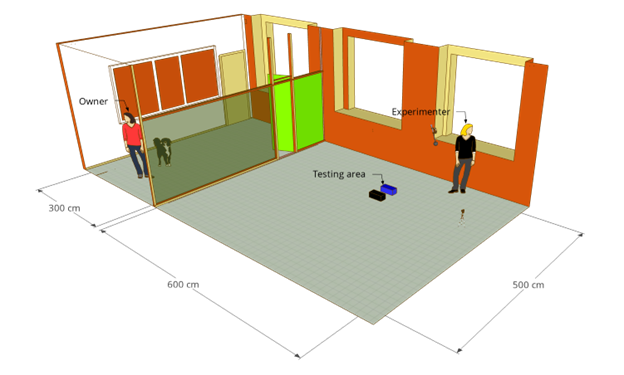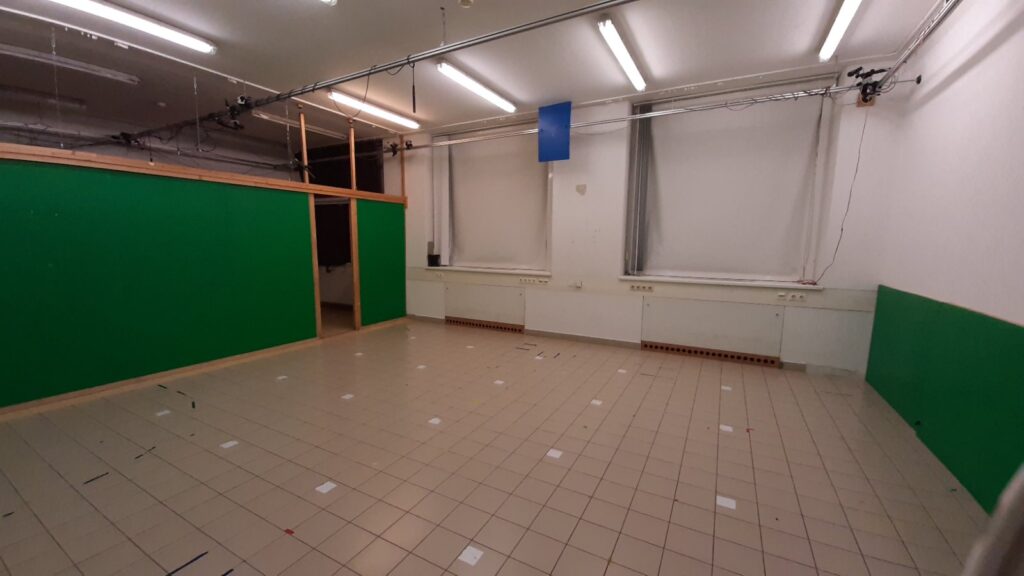The study took place from May 2022 to January 2023 at the Department of Ethology of Eötvös Loránd University (ELTE) in Budapest, Hungary. A total of 19 typical border collies (8 females, 11 males) were included in the study after excluding four dogs for various reasons. The dogs were recruited from different sources, including social media and the database of ELTE University.
The testing was conducted in a controlled environment consisting of two rooms. The experimental trials were recorded using four mounted room cameras and two GoPro cameras. The dogs were presented with a choice between two objects in each trial, and they had 40 seconds to make their selection (Figure 1, 2).


The objects used in the experiment included target objects with manipulated shapes and textures, as well as distractor objects. In Figure 3, the first row shows the objects covered in Velcro tape, including an L-shaped object, a cylinder, and a rectangular object, from left to right. The second row shows the same objects covered in duct tape, and the third row shows the same objects left uncovered.

The pair combinations of objects were semi-randomly presented to the dogs, with each target object being tested at least once. The positions of the objects were balanced to avoid any potential side bias. Throughout the experiment, the dogs’ choices were observed and recorded. The video below provides a glimpse into the training and testing procedure.